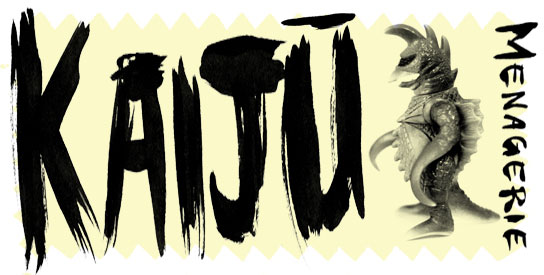
NAME: 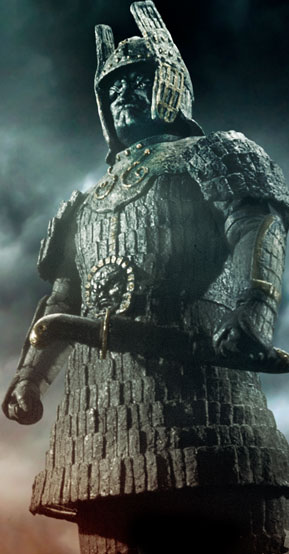
Daimajin (大魔神)
FIRST APPEARS IN:
Daimajin, 1966
DESIGN FEATURES:
– a frozen expression of fury
– a sword used mostly for fashion purposes
– samurai garb
SKILLS:
– changing from an unmoving statue to a giant heroic demon using a peek-a-boo style hand swipe
– parting water like an angry Moses
– helping children in the form of a eagle
– enacting sweet vengeance on greedy pricks
DAIMAJIN THEME:
Audio PlayerDaimajin is nothing like any other giant monster featured in the Menagerie thus far. Just looking at his physical appearance, it’s clear this guy won’t be showing up in an episode of Ultraman. The name Daimajin is difficult to translate. My Japanese speaking partner translates it literally to “Giant Evil Demon (or God)”, but that doesn’t exactly suit the character of Daimajin. Perhaps a more appropriate moniker would be “Big Angry God”, or “Massive Angry Demon with Pretty Good Intentions”.
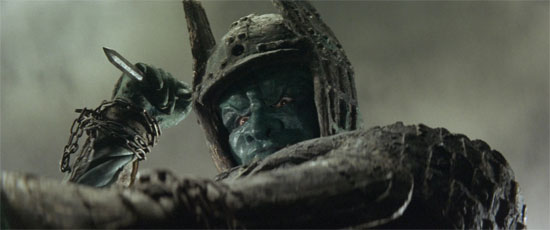
Daimajin first appeared in a trilogy of films from the mighty Daiei, the folks who blessed the world with Gamera. All three pictures – Daimajin, Return of Daimajin and Wrath of Daimajin – were released in 1966, only months apart. Daimajin kicks things off with a thundering bang introducing a simple and effective five-step structure that followed in the two entertaining sequels:
1. A rich, evil daimyo/lord and his gang of guffawing toughies exploit whimpering peasants.
2. Said evil rich guys disrespect local traditions.
3. Whimpering peasants attempt to fight back and fail.
4. Evil rich guys destroy or attempt to destroy gigantic statue of local, wrathful God.
5. Statue comes to life and fucks shit up, motherfucker.

Each film differs in the smaller details. (The third in particular deviates, moving into Stand By Me territory with the rather traumatising adventure of four children who attempt to rescue their dads from evil rich guys. In the process, one of the kids drowns and a man is boiled alive – what the hell!) But the five steps above are present in all three.
This structure adds an aura of mystery to the Daimajin, especially in his first appearance. Each film makes the audience wait an enormous amount of time before we get to see the gigantic angry statue in action. Over an hour into the first film, I was wondering whether they were saving his appearance for the second film. When Daimajin finally awakens, the feeling is euphoric.
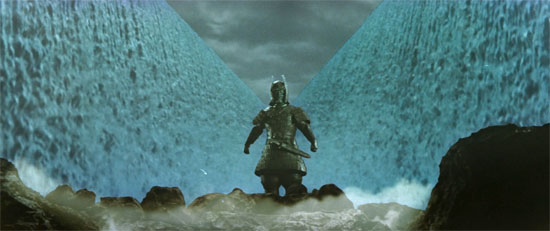
Daimajin’s vengeance is swift, brutal and silent. The only sound he makes comes from his thundering footsteps, which are perfectly entwined with Akira Ifukube’s score (a score happily reminiscent of his work on the Godzilla franchise). The remaining sound scape during his attack is filled with bloodcurdling screams and breaking bones as Daimajin crushes, stabs and smashes his way through the villains. Daimajin is far scarier than your typical giant monster. His indestructibility, his furious glare, and the unmerciful path of death he leaves is jaw-dropping.
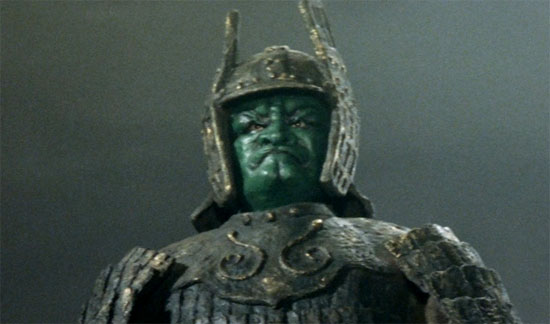
The Daimajin trilogy is a must-see for any kaijū fan. Those that dig Japanese horror of yesteryear should definitely check out the first entry, directed by Kimiyoshi Yasuda (the man behind the excellent 100 Monsters) who shrouds the film with a bleak sense of dread. Daimajin was recently re-introduced in a television series titled Daimajin Kanon. The show doesn’t look like my cup of tea, but for those interested here is a detailed series guide.
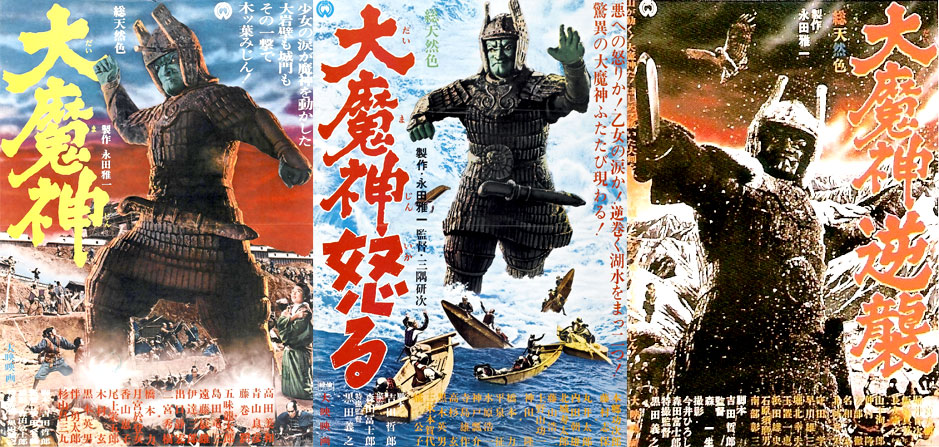





1 comment
Pulgasari (불가사리 Bulgasari) | MONDO EXPLOITO says:
Nov 18, 2015
[…] god-like being saving constantly sobbing peasants, Pulgasari is closer in tone and narrative to Daimajin than Godzilla. But, with its bizarre backstory and propaganda leanings, comparisons only go so far. […]